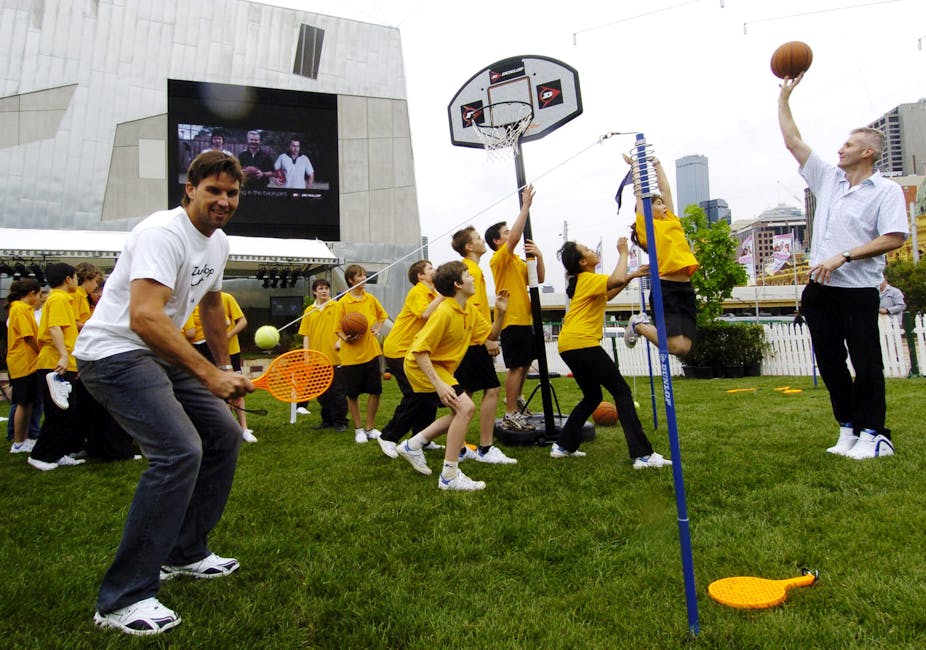The post-mortem of Australia’s performance at the Olympics is in full swing. Indeed the knives were being sharpened as early as day two of compeition when the men bombed out of the men’s 4x100m swimming relay.
Prior to the London Olympics, I had predicted we would finish tenth and that success in Rio in 2016 would be harder, as more and more countries invested in Olympic competition.
The picture would have been even more depressing had Australia not had the services of the Ukrainian-born sailing coach Victor “medal-maker” Kovalenko – we may have ended up somewhere above the Islamic Republic of Iran (17th) and below the Kiwis (15th).
The discussions have already focused on issues associated with funding models, building another AIS, pumping more money into elite sport, and developing better talent identification methods. What has been neglected in the discussions is the role grassroots-level sport should play in the hunt for Olympic medals.
It is well-established and documented that our success at the Sydney 2000, Athens 2004 and Beijing 2008 Olympic Games was based on supporting elite sport development. That is, talented youths were identified and supported to achieve success. A number of sports – including swimming, rowing and hockey – were also targeted in an attempt to improve our chances of medal success. Nobody questioned the ethics of this policy until the recent London Olympics.
Inevitability, this policy had been replicated by other nations; especially in Asia. While South Korea and Japan targeted certain sports, the Chinese were keen to gain medals in all sports.
Britain were always going to continue funding sport – after all, they are a nation with a fine and long sporting tradition. Many forget that at the 1996 Atlanta Olympic Games they gained just one gold medal. At London they finished third with 28 gold medals.
Australian elite sport policy and privileging meant serious issues at the grassroots-level were able to be swept under the carpet. It would seem that in the world of elite sport, nobody was interested in issues such as the slow demise of Australian school sport, rising levels of youth obesity and the increase of youth physical inactivity.
The Crawford Report, published in 2009, identified the problems in youth sport (school and community) but policy-makers were keen to push the line of “top-five finish, 46 medals” and neglect Crawford’s recommendations. In particular, Crawford had noted that grassroots-level sport had been a central feature of the Australian way of life, but also of Australia being a nursery of Olympic success.
Nobody took notice … until now.
Commenting on the London Olympics marathon last week, former marathon icon and Australian Insitute of Sport head Robert De Castella suggested the problem with Australia’s performance is linked to what’s happening in schools.
The problems with school sport and physical education are not with the teachers. Debates have focused on “giving it more time in the curriculum” or “we need more specialised physical education teachers”. The overwhelming majority of teachers love sport and are keen to be involved in its promotion. The NSW Department of Education School Sport Unit are tireless in their pursuit of the promotion of school sport.
The issue is more related to the fact sport and physical education are no longer institutionalised in many school and educational systems.
Australian educationalists did not see sport and physical education as a priority and there was no lobby to argue for its inclusion; not even the Australian Olympic Committee.
This all came to a head when the Australian National Curriculum was devised. When the curriculum is introduced in 2014, school sport will no longer be mandated. Schools have the option to include it – in a 10% free time allocation which they will control.
But why would a principal include sport? It is not mandated, it is costly, there are legal liability issues, teachers need to be trained, you cannot use it as a promotional tool and the focus on high-stakes testing (such as NAPLAN) has exacerbated the problem.
In my work at the University of Sydney, I ask pre-service teachers to discuss their school sport and physical education experiences. Many talk about never having jumped over a hurdle, throwing a shot put, jumping into a pool to compete in a race, and only competing in a narrow range of sports. Many of these would-be teachers have had a negative experience with sport.
Even if government school students were motivated to sail, after the magnificent exploits of our Olympic sailors, who would give them this opportunity? Statistics tells us 40% of school-aged youth do not take part in any organised sport.
This, coupled with limited and poor experiences in schools, highlights some of the problems which will face future sporting success. Regardless, we should focus on grassroots-level sport and in particular on school sport, because of the educational, social and psychological benefits it can achieve. That is achieving positive health outcomes for Australia’s youth.
We don’t want to be a nation besotted by “gold medal fever” with high rates of youth obesity and physical inactivity.
Perhaps there can be positives to come out of Australia’s so-called “poor performance” at the London 2012 Olympic Games – a renewed focus on the place of sport in Australian education, for a start.
This would build on a tradition which not only promoted mass participation for all students but was also responsible for being a nursery of Australian gold.

